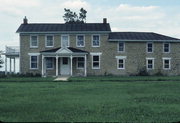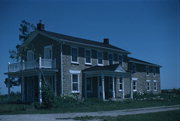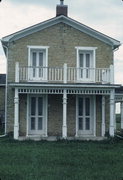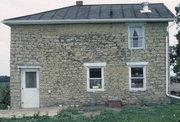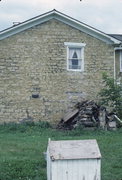| Additional Information: | A 'site file' exists for this property. It contains additional information such as correspondence, newspaper clippings, or historical information. It is a public record and may be viewed in person at the Wisconsin Historical Society, State Historic Preservation Office.
STONE HOUSE BUILT BY HENRY GRATIOT (D.1836), OPERATOR OF A LEAD MINE AND EARLY INDIAN AGENT, STOOD IN GRATIOT'S GROVE, A TOWN WHICH HAS SINCE VANISHED INTO THIN AIR.
This building is the last reminder of Gratiot’s Grove, a mining settlement founded by Henry Gratiot and his brother, which for a time was one of the largest communities in Wisconsin's lead-mining region. The Gratiots had migrated upriver from St. Louis. Aided by Catherine Myott, a métis woman (of mixed Ho-Chunk and French descent), the Gratiots got permission from the indigenous Ho-Chunks to establish a mining claim. Henry Gratiot soon came to dominate the local economy; he owned one of the area’s two smelters, a general store, and a flour mill and co-owned the local sawmill. He lived in this handsome limestone ashlar house only a short time before he died in 1836, but it remained in his family.
The original structure was an I-house, a folk style found primarily in the South (see IA3). This one, strictly symmetrical, has spare detailing--flat stone lintels over the first-story windows and a simple frieze and cornice. Sometime in the 1850s, the Gratiot family added a second story to the house's east wing and appended a second two-story block with a hipped roof.
More changes came in the 1890s. A one-story porch, with its decorative columns, spindle frieze, and triangular pediment, reflects the Victorian fashion of the day. A second, two-tiered porch was added to the house's west side (the porch you see today is a recent reconstruction). Tall, narrow, glazed double-doors open onto this porch, with a second, shorter pair of doors providing access to the balustraded deck. These additions may have marked the last new construction in Gratiot's Grove; by the 1890s, the lead-mining boom had ended, and this settlement was abandoned soon afterward. |
|---|

